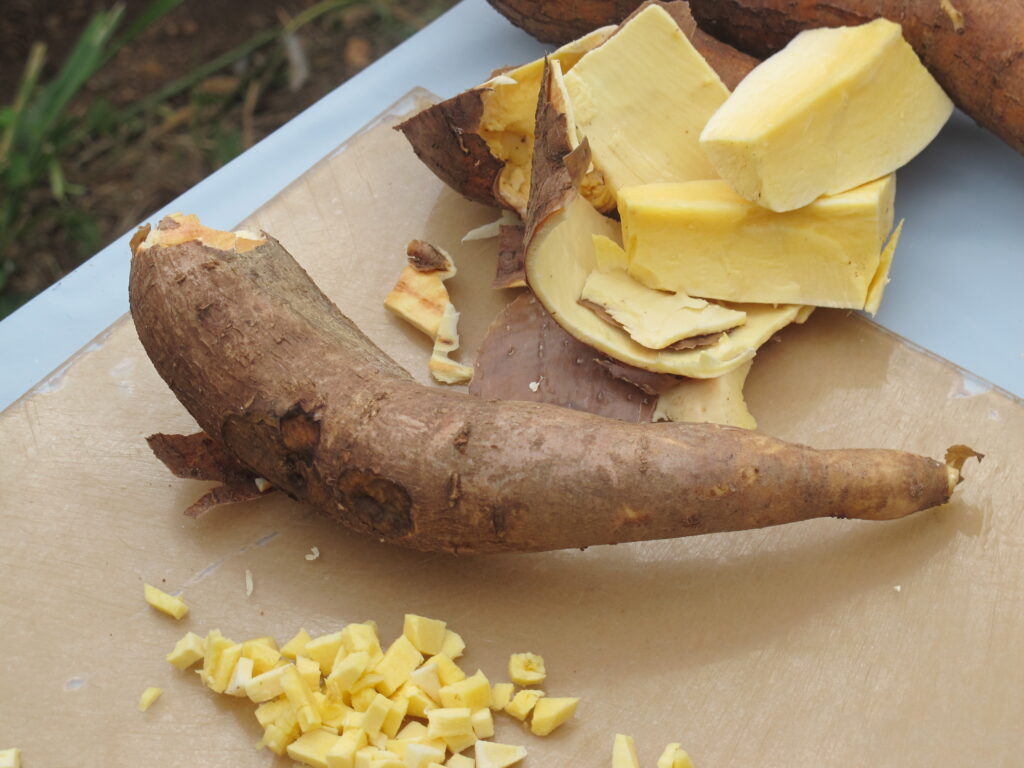As the dissemination of nutrient-rich staple food crops intensifies, nutritionists are confident that millions of people will eventually get more critical vitamins and minerals from foods that are already part of their diets.
Some of these nutrient-rich crops such as orange sweet potato with vitamin A or iron-rich pearl millet have already been released in several countries in Africa and Asia, where hidden hunger is most extreme. However, one of the biggest potential challenges facing these new varieties of staple food crops is their acceptability among intended beneficiaries – the farmers and consumers. Vitamin A-rich crops, in particular, can look and taste different to the ordinary varieties.
A case in point is cassava. Due to its higher amounts of beta-carotene, vitamin A-rich cassava is yellow-fleshed and softer in texture. In contrast, the varieties that are traditionally eaten are white-fleshed and tend to be harder. Studies on consumer acceptability of nutrient-rich crops are being undertaken. One recent study focused on whether vitamin A-rich cassava was accepted by school children in eastern Kenya.
Published in the journal PLosOne, the study found that the respondents, who included the children and their caretakers, enjoyed and preferred the taste of vitamin A-rich cassava. “There is no doubt that for this cassava to succeed in its target of reducing vitamin A deficiency in beneficiary communities, it would have to match or exceed local uptake of the ordinary variety. But, displacing the deep-rooted cultural and sensory attachment to the ordinary variety is, theoretically, a significant hurdle,” says Elise Talsma from the Division of Human Nutrition at Wageningen University in the Netherlands.
Ms. Talsma was part of the research team that conducted the study. According to the study, 70 percent of the respondents preferred vitamin A-rich cassava, citing the biofortified crop’s “attractive color, soft texture and sweet taste.” This followed their tasting of cooked samples of both the vitamin A-rich and white cassava varieties.
“The results of the sensory study were absolutely promising,” says Ms. Talsma, who led the research. “They proved that biofortified cassava is not only superior to the ordinary variety in micronutrient value, but that it also has a sweeter taste and softer feel. Therefore, the sensory acceptability challenge is, perhaps, less significant than the cultural one in this particular community.”
Cultural acceptability results, indeed, were rather mixed. The study found that while nearly all caretakers had the intention to prepare vitamin A-rich cassava for their children, they also harbored fears about the biofortified crop. These included vitamin A-rich cassava’s erroneously perceived poisonousness, susceptibility to destruction by animals, rain dependency, high purchasing cost, and lack of availability on the market.
To counter the cultural barrier, more effort will have to be directed toward increasing local knowledge of the negative effects of vitamin A deficiency, as well as highlighting the benefits and efficacy of vitamin A-rich cassava.
Related
Click here to watch VOA coverage on vitamin A-rich cassava in Nigeria.
